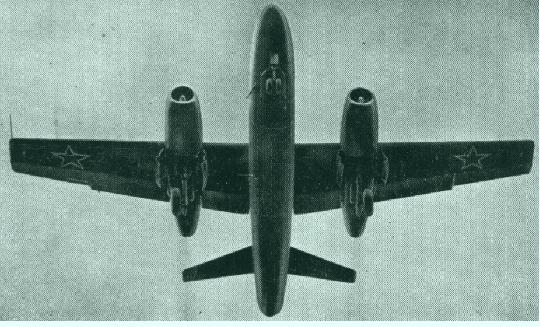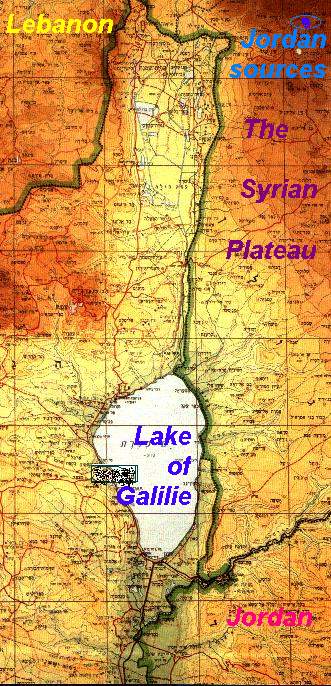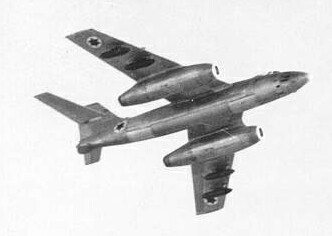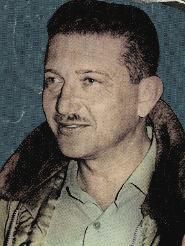- February 1960, "Rotem" affair
- That month Egyptian armoured forces entered Sinai without being noticed.
- A photo sortie was carried out in February 23, by the Vautour BR 33 [ pilot: Y. Sarig, navigator: A. Los-Eyal, escorted by a Vautour IIA, [ piloted by Y. Agassi 110 Sqn. Com. ]
- The original mission was a IAF demand, regarding the Egyptian airfields at the vicinity of the Suez Canal, but the IDF-HQ /I-Branch requested some information about the ground forces as well.
- This mission was carried out jointly with a quartet of Super Mysteres, which patrolled high above the Northern end of the canal.
- The pair of Vautours was discovered by its vapour trails, and two Mig-17 made an attempt of intercept. The Super Mysteres were already short of fuel and left the theatre to the single armed Vautour of the two. The Vautours climbed to 50,000 feet and although Agassi gained superiority over a Mig he was not allowed to open fire.
- Inspite of this interference the mission was completed, and a series of photos along the Suez Canal were shot, from North to South. This sortie lasted 1h and 40 min.
- The developed films caused much embarrassment, discovering that a whole Egyptian army's camps were deserted and the forces "disappeared".
- The same team returned next morning, February 24 to another photo sortie ,
escorted by two Super Mysteres, to try to locate the "lost" army, in Sinai.
Some misunderstanding with the S.M.B.2s, connected to timing, caused the stop of
this flight and all the four aircraft returned to their bases. But a short time afterwards, the same formation returned to carry out the photo mission,
and this time discovered that the Egyptian forces ( a Field-Army of 5 divisions,
with 500 to 600 tanks ), deployed in the area between Jebel-Livni
to El-Arish, North-East Sinai, very near to the Israeli border !.
- * {In parallel with this flight a Mystere also carried out a photo sortie over the nearer area between Gaza Strip and El-Arish}.
- The discovery resulted in a general-alert of the IDF. being ready to carry out an immediate response , according to previously prepared plans, in order to meet the Egyptians as far as possible from the Israeli borders.
- The IAF had two mission orders ready:
- a) "Rotem": Attacking Egyptian ground forces.
- b) "Peten": Air-borne raid by paratroopers in cargo planes and helicopters, supported by an aerial umbrella.
- During the next days several more PR flights were accomplished, to achieve close surveillance over the enemy's movements.
- The crisis was solved without use of force. The Egyptian forces retreated, at last, in the beginning of March.
- One of the important deductions was to enhance the PR capabilities of the Vautour.
- * {In parallel with this flight a Mystere also carried out a photo sortie over the nearer area between Gaza Strip and El-Arish}.
- June 27, 1960 - Long-range escort mission
- July 14, 1961 - PR day sortie
- September 24, 1961, first long-range night PR sortie
- September 27, 1961, first nocturnal intrcept
- January 23, 1962, an exceptional night PR sortie, Egypt.
- March 16, 1962, IDF raid on Taufic,Syrian fortified post.
- (operation "Snunit"). First Vautours ground attack
- This raid on these fortified posts was carried out after long and constant Syrian shelling and shooting civil Israeli villages, "Kibbutzim" and instalations.
- The Syrian reacted to the raid by a massive artillery shelling, The IDF artillery counter-fire was insufficient and the Syrian continued firing.
- At 04:10 three Vautours took off to attack the syrian forces. The pilots were R. Har-el (leader), Y. Shacar (with No. 20), Menachem Bar (Wing no.1 commander, and Y. Sarig). Y.Sarig, had to return due to a technical problem.
- Y. Shachar attacked first with four 250 kg. bombs but missed the Syrian battery by some 200 m. M. Bar dived through the clouds to locate the target and bombed with more accuracy. The attack was lightened by flares dropped from the leader's aircraft.
- This was the first ground attack of the Vautours, but on the whole, was quite inaccurate.
- March 18, 1962, a chase after an IL-28.
- [ April 7, 1962 : Arrival of the first Mirage-IIICJ ]
 |
 |
 |
| A line of Egyptian Mig-17, 1957. It was an agile fighter and a good attacker. | The IL-28 troubled the IAF by continous photo-recce sorties over Israel. All attempts of interception failed. | The two-engined super-sonic Mig-19, was used as escort for the IL-28. It proved to be less successful than previously expected. |
- July 1962, Syrian shelling
- October 2, 1962, PR sortie, Sinai
- Alerts - end of 1962
- Beginning of 1963, Operation Order "N"
- 1963, Operations Orders "Ayit"
- March, 20, 1963. PR sortie to Ras-Banas
- July 1963
- Sqn. 119 transferred its Vautours to sqn. 110 towards the conversion to Mirage fighters.
- The inventory of sqn. 119 was, just before disbanding, 4 Vautours N ( 61, 62, 65, 67, plus one, 69, in France for missile trials), and 4 Meteors N.F.13 . The Meteors were withdrawn as the Ns were moved to Sqn. 110.
-
The gross strength of Sqn. 110, August 1963 was 20 :
- * A - 12
- * N - 4 (plus one in France); one ( No. 61 ?) retaining night intercept capability for several months more.
- * BR - 3.
- * A - 12
- July 29, 1963. PR sortie to eastern Syria
- August 1963, alert for night attack.

- October 18, 1963: Discovering the SAM-2
- August 25-26, 1964. Night PR sortie - El-Maza (Damascus)
- November 12-14, 1964. A wide incident at the Syrian border.
- March 1965: Operation Order "Sachaf".
- May 13, 1965, "Tel Dan" incidents
- July 1965, Operation Order "B..".
- July 18,22,23, 1965. PR sorties -Syria
- August 12. 1965.
- October 13, 1965. PR sortie, Sinai.
- Fall of 1965:
- "Moked" plan, in its full version, wass published. Sqn. 110, as all other IAF units, trained and rehearsed ground attacks according to the planned targets in Egypt and in Syria.
- End of 1965:
- Sqn. 110 held an inventory of (approx.) 17 Vautours [ A-11, N-4, BR-2 ], two more { A no. 20 and N no. 66 } had been actually lost, one to be repaired till end of 1966.
- February 13, 1966.
- May 1. 1966, Operation Order "L"
- July 13/14, 1966, Putting an end to Syrian water deviation plans (Operation "Ruach")
- August 15, 1966. PR sortie, Egypt.
- October 30, 1966. PR sortie, Syria.
- End of 1966 and onwards:
- August 15, 1966 : The Sea of Galilie ("Kinneret") incident
- { 1960 - 1967 - VARIOUS DATES }.
Sources: [iaf-site] [iaf-hst3] [ amos dor ] [ as-50 ] [ "defence 50" album ][aloni ]
and: [ A. Tzivoni, G. Bar-Nir. M. Ramati, M. Ofer, Y. Sarig, A. Los Eyal, R. Har-el, O. Nachman ]
TOP OF PAGE
Summary of the first decade
1. In retrospect, the first ten years were a preparation for the peak:
the Vautours outstanding service in the Six Days
War.
13. It is really a wonder when one realizes the immense load that
had been imposed on the Vautours' crews and aircraft !
2. From the early start the Vautours were continually improved, upgraded
and adapted to versatile missions. The Vautours of the mid. Sixties'
became a real strategic, long-arm of the IAF.
3. The few aircraft acquired, and their crews, took part in a vast
array of activities, operations, conversion, training, testing, etc.,
all in parallel and under time stress.
4. The crucial first years, between 1957 to 1960/1 were dedicated to
the Vautour's study and preparing the infra-structure for its future
missions. This was true for all the three basic roles of the aircraft:
strike/attack, all-weather intercept and photo-reconnaissance.
5. From 1960, but very clearly from 1964 onwards, the Vautours proved
their attack capabilities, participating in local operations against
Syrian posts, carrying incomparable bomb loads.
6. The handful of Vautours converted to PR missions supplied most
valuable intelligence, gathered in daring, lomg range sorties. This
capability was proved already in 1960, and more significantly - from
1962 onwards.
7. Achievments of night/all-weather intercept were somewhat less
successful. All the attempts to shoot down the IL-28 failed, but
the causes can't be related solely to the Vautour's capability.
8. The Vautour fought air battles against "pure" fighters, as the Mig-17,
as an equal rival, proving its self-defence ability.
9. The Vautours' readiness to full war operations, was
achieved by converting the two-seaters, N and BR, to the advanced
role of leading and navigating attack formations (since 1964).
10. Many doctrine principles were developed by the Vautours commanders
and crewmen. Those were implemented in future eras, on more technology
-advanced platforms.
11. The Vautours were also the main test besd of the time, paving way
to many kinds of arms and equipment to be adapted to other types of
IAF aircraft.
12. Unfortunately, the Vautours suffered many losses during this period,
3 crewmen killed and 10 aircraft lost, all in accidents. These was the sad price for a harsh and difficult service.
When Did they Rest ??
14. During the first decade of their service, 1957 to 1967, we count
so many missions in such a density, that it's
very hard to imagine the several tenths of men and the two dozens
of aircraft actually doing all these, and in parallel !
Training, converting new personnel, repairing and refurbishing, developing, testing, installing new equipment, AND... being in almost constant operational alert, updating mission orders and
rehearsing them !!!.
ABOVE ALL - many accidents, with losses, occured,
which normally could affect any kind of activity.
| IMPROVEMENTS &UPGRADES | 
| IAF VAUTOURS CONTENTS PAGE |  |
THE SIX DAYS WAR |
|---|
[ BACK TO MAIN PAGE ]
This page was last updated: July 13, 2002
 THE VAUTOUR IN THE IAF SERVICE
THE VAUTOUR IN THE IAF SERVICE
